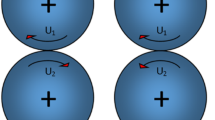Abstract
Throughout the years, it has become more and more important to find new methods for reducing friction and wear occurrence in machine elements. A possible solution is found in texturing the surfaces under tribological contact, as demonstrated by the development and spread of plateau-honed surface for cylinder liners. To prove the efficacy of a particular textured surface, it is paramount to perform experimental tests under controlled laboratory conditions. In this paper, a new test rig simulating pure sliding conditions is presented, dubbed axial sliding test. It presents four major components: a rod, a sleeve, a housing and a stripwound container. The rod and the sleeve are the two surfaces in relative sliding motion; the stripwound container maintains a constant, but adjustable normal pressure, and the housing serves as interface between the sleeve and the container. For carrying out the test, two machineries are necessary: a press to provide the normal pressure and a tensile machine to perform the axial movements. The test is calibrated so that the correspondence between the normal pressure and the container advancement is found. Preliminary tests are carried out involving a multifunctional and a fine-turned rod against a mirror-polished sleeve. Qualitatively, the multifunctional surfaces improve the friction conditions, but a more structured test campaign is required. It is furthermore assessed the repeatability of the test device, in order to rely on the results obtained. Ten repetitions made at the same pressure using the fine-turned rod displayed good repeatability of the force results both in terms of average values and trends.













Similar content being viewed by others
References
Erdemir, A.: Review of engineered tribological interfaces for improved boundary lubrication. Trib. Int. 38, 249–256 (2005)
Stachowiak, G., Podsialdo, P.: 3-D characterization, optimization and classification of textured surfaces. Tribol. Lett. 32, 13–21 (2008)
Bruzzone, A.A.G., Costa, H.L., Lonardo, P.M., Lucca, D.A.: Advances in engineered surfaces for functional performance. CIRP Ann. Manuf. Technol. 57, 750–769 (2008)
Williams, J.A.: Engineering Tribology, p. 1. Oxford University Press, Oxford (1994)
Jost, H.P.: Lubrication (Tribology)—A Report on the Present Position and Industry’s Needs, pp. 1–79. Her Majesty’s Stationery Office, London (1966)
Jost, H.P.: Tribology—origin and future. Wear 136(1), 1–17 (1990)
Evans, C.J., Bryan, J.B.: Structured”, “textured” or “engineered surfaces. CIRP Ann. Manuf. Technol. 48(2), 541–556 (1999)
Stout, K.J., Spedding, T.A.: The characterization of internal combustion engine bores. Wear 83, 311–326 (1982)
Whitehouse, D.J.: Some theoretical aspects of a practical measurement problem in plateau honing. Int. J. Prod. Res. 21(2), 215–221 (1983)
Stout, K.J., Sullivan, P.J., Dong, W.P., Mainsah, E., Luo, N., Mathia, T., Zahouani, H.: The Development of Methods for the Characterization of Roughness in Three Dimensions. Commission of the European Communities, UK (1993)
Pettersson, U., Jacobson, S.: Textured surfaces for improved lubrication at high pressure and low sliding speed of roller/piston in hydraulic motors. Tribol. Int. 40, 355–359 (2007)
Vrbka, M., Šamánek, O., Šperka, P., Návrat, T., Křupka, I., Hartl, M.: Effect of surface texturing on rolling contact fatigue within mixed lubricated non-conformal rolling/sliding contacts. Tribol. Int. 43, 1457–1465 (2010)
Ramesh, A., Akram, W., Mishra, P.S., Cannon, A.H., Polycarpou, A.A., King, W.P.: Friction characteristics of microtextured surfaces under mixed and hydrodynamic lubrication. Tribol. Int. 57, 170–176 (2013)
Phoenix Tribology Ltd: Plint Tribology Products. www.phoenix-tribology.com. Accessed 10 Feb 2013
Plint, A.G., Plint, M.A.: Test procedure for rapid assessment of frictional properties of engine oils at elevated temperatures. Tribol. Int. 17(4), 209–213 (1984)
Standard ASTM G99-04a: Standard Test Method for Wear Testing with a Pin-on-Disk Apparatus (2004). http://enterprise2.astm.org/DOWNLOAD/G99-04A.1375232-1.pdf. Accessed 10 Feb 2013
Friis, K.S., Godi, A., De Chiffre, L.: Characterization and robust filtering of multifunctional surfaces using ISO standards. Meas. Sci. Technol. 22, 125101 (2011)
Grønbæk, J.: Generation of multifunctional surfaces by hard-machining followed by robot assisted polishing. In: Proceedings of the “Functional Surfaces in Mechanical Systems” Conference, DTU, Denmark (2011)
Godi, A., Friis, K.S., De Chiffre, L.: Characterization of multifunctional surfaces during fabrication. In: Proceedings of the 11th euspen International Conference, Como, Italy, pp. 92–95 (2011)
Grønbæk, J.: Stripwinding of tool for bulk metal forming. Ph.D. Thesis, Technical University of Denmark (1981) (In Danish)
Grønbæk, J.: Application of stripwinding tool to large reduction cold forging processes. In: Proceedings of the North American Manufacturing Research Conference (NAMRC-X), Hamilton, Canada, pp. 225–232 (1982)
Grønbæk, J.: Stripwound cold-forging tools—a technical and economical alternative. J. Mater. Process. Techn. 35, 483–493 (1992)
Strecon A/S: The stripwinding principle. www.strecon.com. Accessed 30 Nov 2012
Sidenius, I.: Aksler. Kiler, fedre og splines. Krympning og roterende skiver. Kompendium til maskinelementer KP4, Polyteknisk Forlag, Denmark (1971) (In Danish)
Klüber Lubrication: BARRIERTA® L55 series. http://www.klubersolutions.com/pdfs/Barrierta%20L%2055.pdf. Accessed 30 Nov 2012
Schey, J.A.: Tribology in Metalworking—Friction, Lubrication and Wear, pp. 72–77. American Society for Metals, Metals Park (1984)
Texaco Multifak® EP 0,1,2. http://www.rolandjrobertdistributor.com/files/Multifak_ep.pdf. Accessed 29 Nov 2012
Author information
Authors and Affiliations
Corresponding author
Rights and permissions
About this article
Cite this article
Godi, A., Grønbæk, J., Mohaghegh, K. et al. A New Rig for Testing Textured Surfaces in Pure Sliding Conditions. Tribol Lett 50, 397–405 (2013). https://doi.org/10.1007/s11249-013-0137-7
Received:
Accepted:
Published:
Issue Date:
DOI: https://doi.org/10.1007/s11249-013-0137-7




